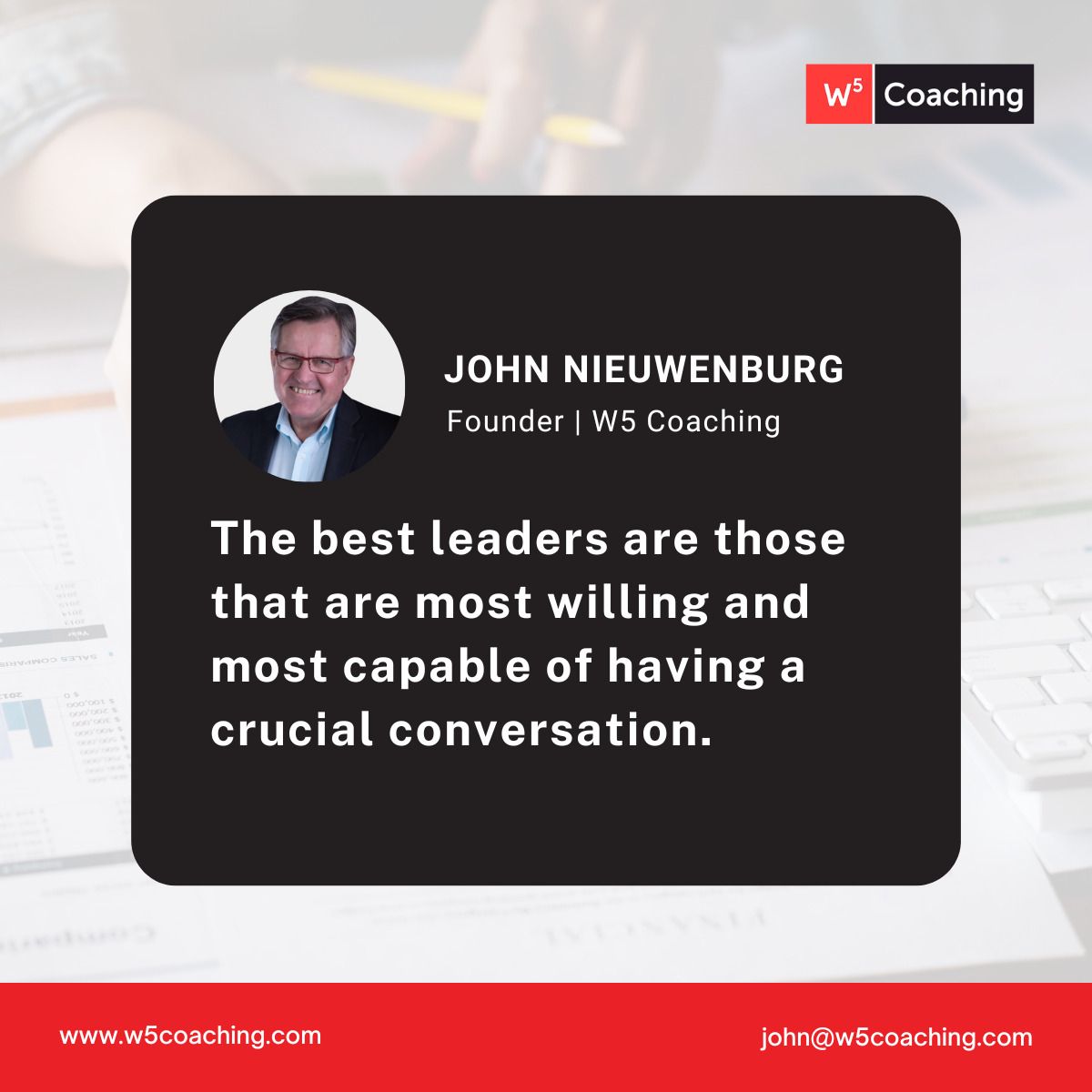Become a Better Business Owner by Mastering the Art of Crucial Conversations

Having difficult conversations can be one of the hardest – and most intimidating – parts of being a business owner.
They’re scary.
They’re messy.
And – whether you like it or not — they’re essential for your long-term business success.
While many owners avoid crucial conversations because they’re so challenging, I’ve found that the most successful business leaders are the ones who understand the importance of vital conversations and who are willing to put in the work to get better at them.
Let’s look at how mastering this important leadership skill can make a real difference in your business.
What is a Crucial Conversation?
 According to the best-selling business book, Crucial Conversations, such a discussion is one in which opinions vary, the stakes are high, and issues are emotional.
According to the best-selling business book, Crucial Conversations, such a discussion is one in which opinions vary, the stakes are high, and issues are emotional.
In other words, the outcome of the conversation could either strengthen or harm a relationship or lead to a dangerous outcome for your business.
See why people tend to avoid them?
The researchers behind Crucial Conversations put forward a bold hypothesis when they published in 2002 – that organizational health and business success would dramatically increase if people could learn and put into practice a set of skills to communicate more effectively during high-stakes conversations.
If people felt confident in their ability to effectively lead a high-stakes discussion, they would stop avoiding conversations that feel too weighted.
And so, the Crucial Conversations framework was born.
When is a Crucial Conversation needed?
The first step in the process is recognizing when you need to hold a crucial conversation.
In a business setting, there are a few common situations that need this kind of candor and clarity.
In fact, I’d bet that you have the need for a crucial conversation several times a day.
Here are some common high-stakes situations – do any of them sound familiar?
- Providing feedback to employees (or letting them go)
- Dealing with suppliers, vendors, and contractors
- Handling customers and complaints
Any of these situations has the potential for vital discussions that affect relationships and potential business success.
Let’s take a closer look.
Providing feedback to employees
 When you’re leading a company, you’re also acting as a coach for your entire team.
When you’re leading a company, you’re also acting as a coach for your entire team.
That means you have to provide them with clear and actionable feedback about their performance – both good and bad.
Sometimes, this might even mean communicating tough decisions like letting someone go.
Delaying or avoiding these conversations can lead to a toxic work environment and hinder the overall growth of your business.
But when you increase your confidence by using a framework like the one presented in Crucial Conversations, you’re less likely to avoid initiating the discussion your business needs to be successful.
Dealing with suppliers, vendors, and contractors
In the business landscape, relationships with suppliers, vendors, and contractors play an important role.
Addressing issues, negotiating terms, and making expectations clear all require open and honest conversations.
Procrastinating or mishandling these discussions can impact your supply chain and business operations.
That’s why it’s so important to be well-trained and comfortable – or at least relatively comfortable – facing these kinds of issues head-on.
Handling customers and complaints
Customer satisfaction is the lifeblood of any business.
When faced with customer complaints or issues, being able to hold a crucial conversation is key to resolving conflicts and retaining customer loyalty.
Ignoring or poorly managing these conversations can lead to reputational damage and loss of business.
Where do you fall when it comes to initiating high-stakes discussions?
Acknowledging your own natural responses during difficult conversations is the first step toward improvement.
Do you lean into fighting? Which isn’t usually productive.
Or do you tend to give in? Or flee? Or avoid? All of which simply lets an issue continue to fester over time.
Whether it’s getting into conflict with your team members or avoiding conversations altogether, understanding your tendencies allows for better self-awareness.
And understanding your own natural response can help you choose the right approach for different scenarios.
The importance of a framework
Crucial Conversations offers a valuable framework for keeping a high-stakes discussion on track and moving toward a solution that benefits everyone.
But as much as I love the Crucial Conversations approach, it might not be for everyone, and it isn’t your only option.
Never Split the Difference by Chris Voss, for example, offers a similar, complementary, approach that also can help you get good results.
The framework you choose matters much less than the decision to let a framework guide you toward greater confidence in broaching the important conversations that affect your business success.
Would you like some help implementing a Crucial Conversations framework – or something similar – to drive your business toward continued success?
Set up a call on my calendar and we’ll have a crucial conversation about coaching 😉

Build a Self-Managing Company
How to build a business that runs smoothly, profitably, and (mostly) without you.
Feeling stressed out and overwhelmed with a business that is taking all your time - and not giving you enough in return?
Are you finding it challenging to hire the right team (and get them to do the right things)?
I wrote this little guide for you!
Enter your details below to receive your free copy!
